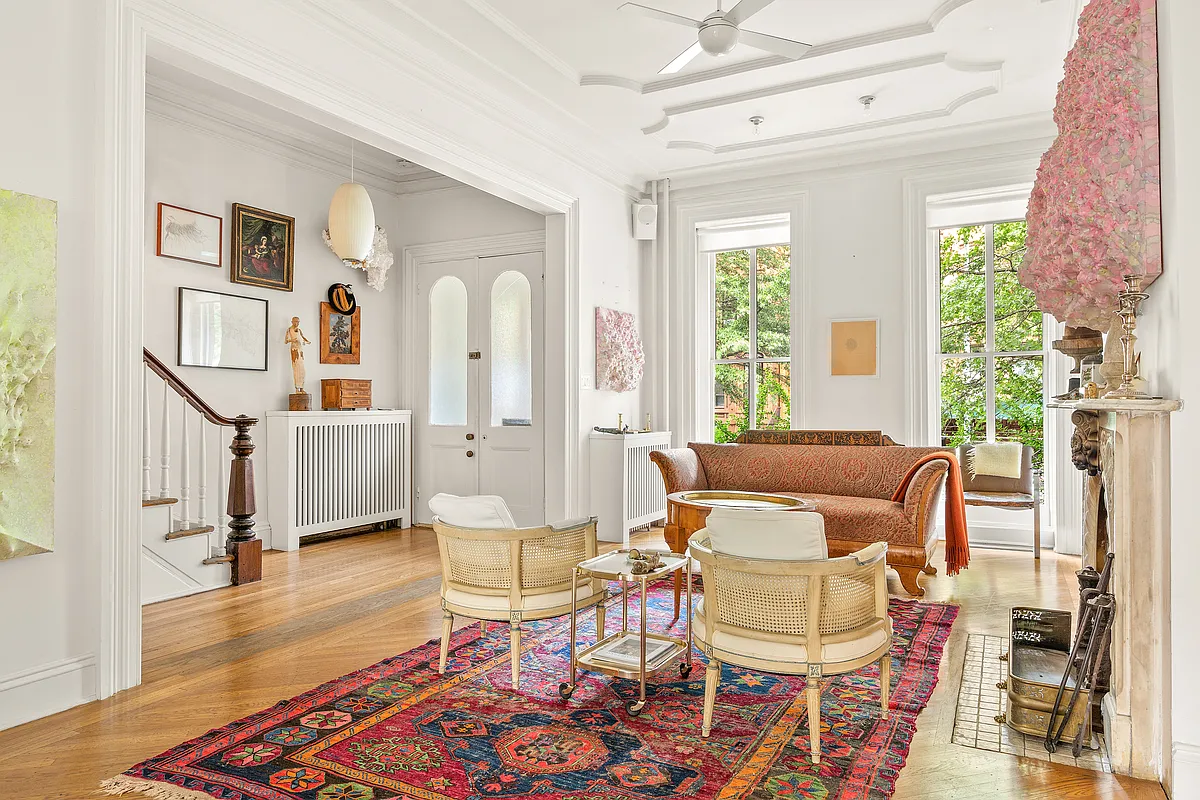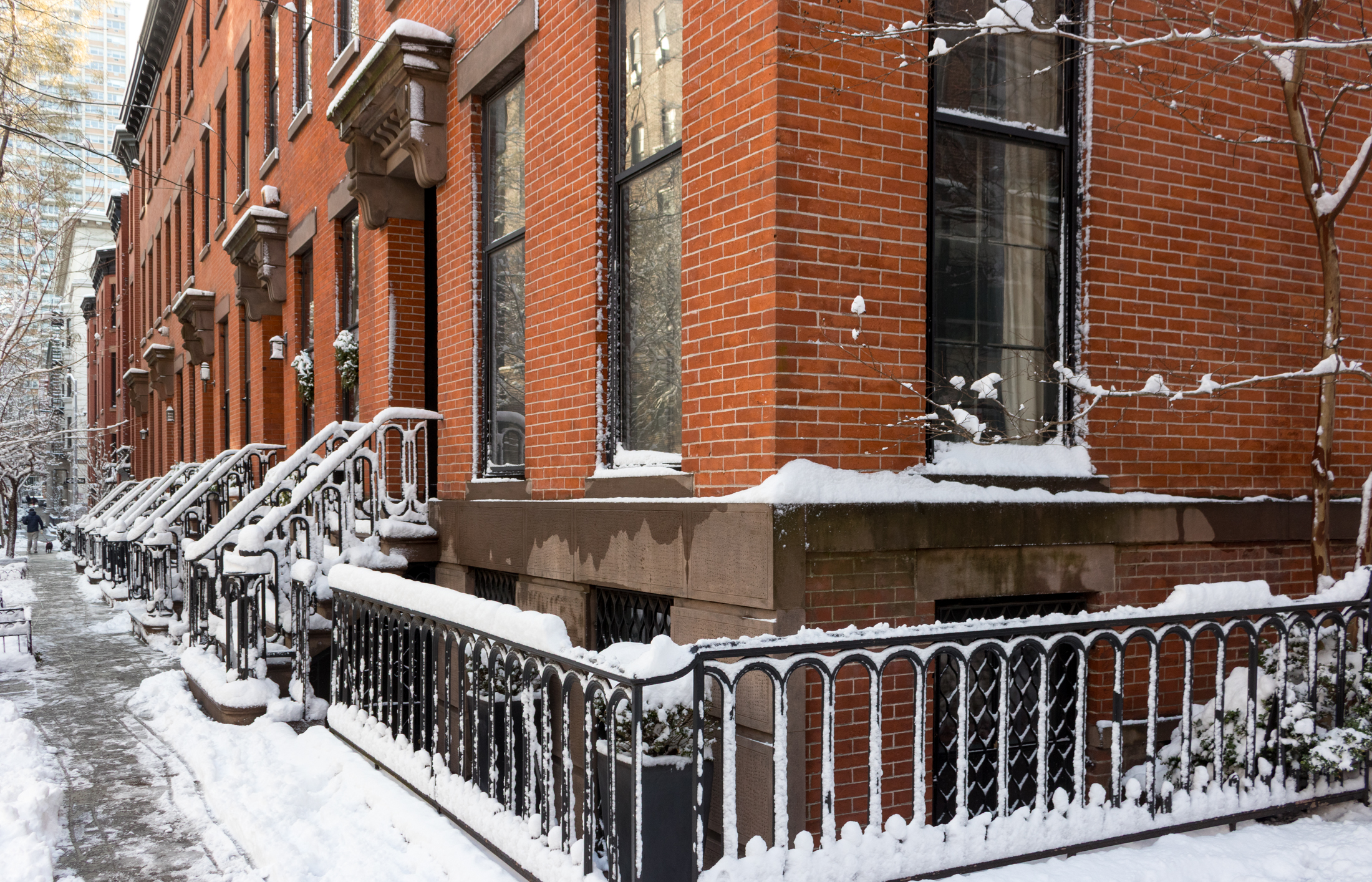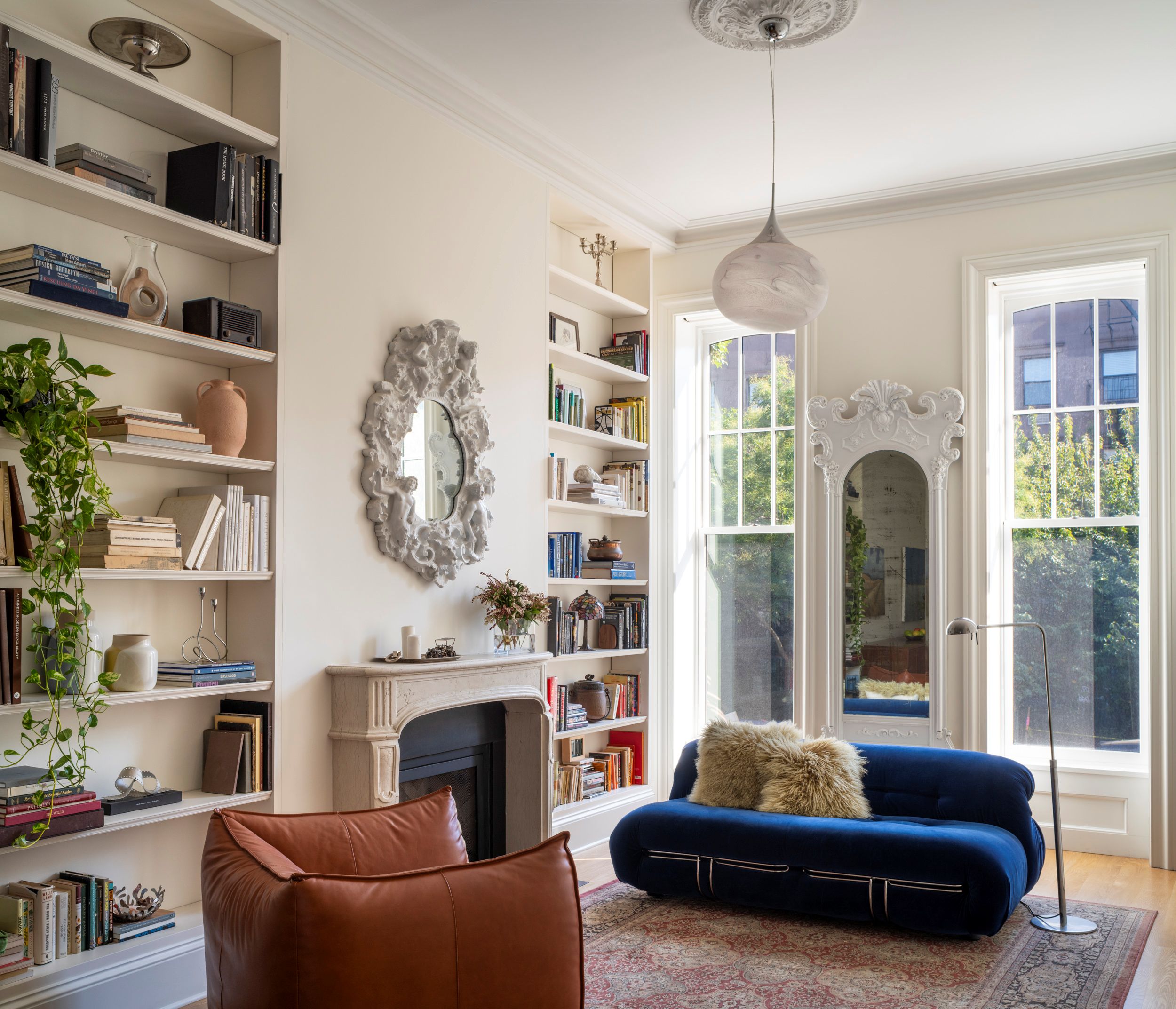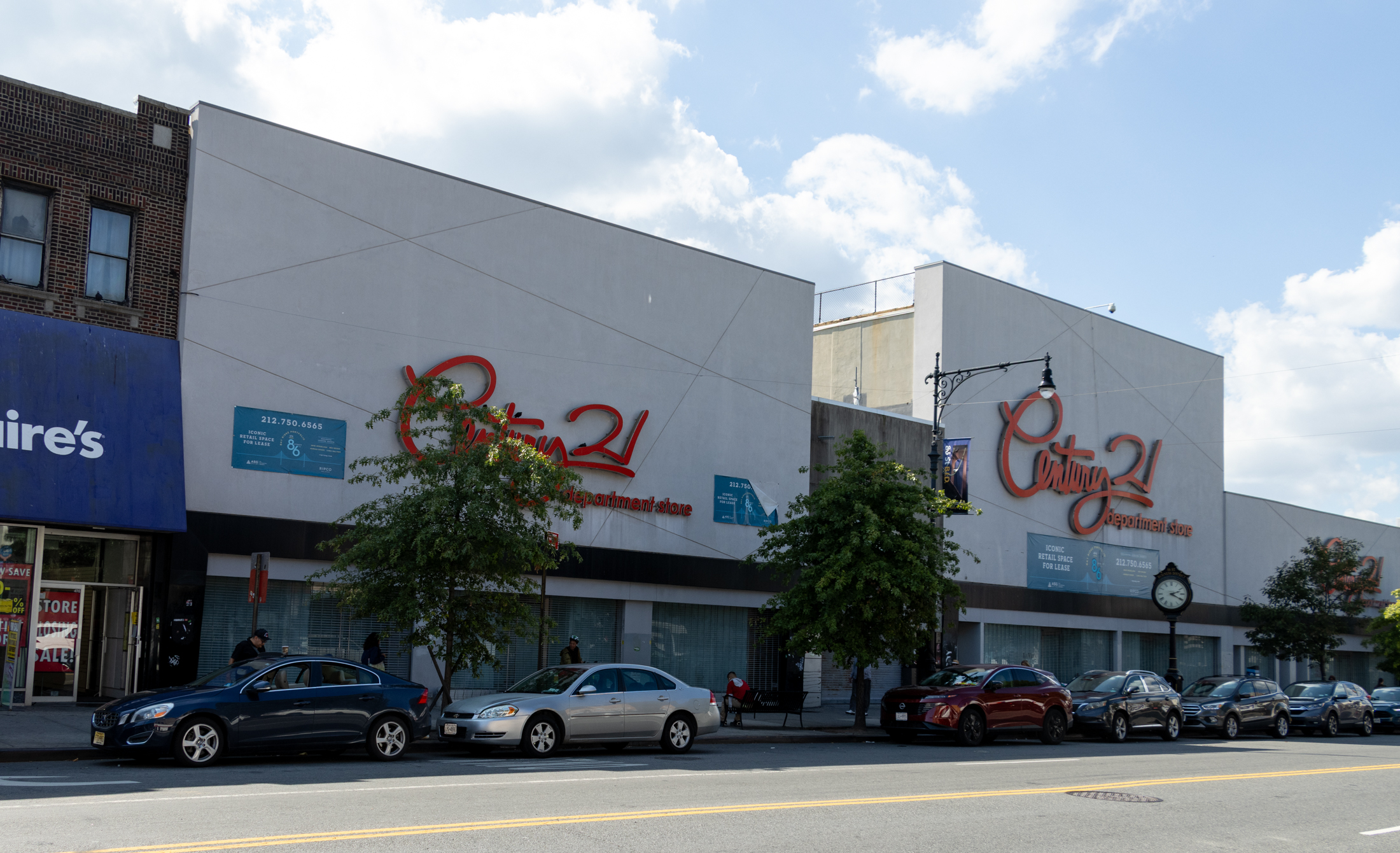4BNA Announces Its Preservation Wish List
With developers encroaching on all sides, the Four Borough Neighborhood Preservation Alliance (FBNPA) is trying to take a pro-active stance in the outer boroughs by nominating a list of buildings and neighborhoods it would like to see landmarked. In Brooklyn, the list includes 18 individual buildings and nine historic districts. Ditmas Park West, West Midwood…

 With developers encroaching on all sides, the Four Borough Neighborhood Preservation Alliance (FBNPA) is trying to take a pro-active stance in the outer boroughs by nominating a list of buildings and neighborhoods it would like to see landmarked. In Brooklyn, the list includes 18 individual buildings and nine historic districts. Ditmas Park West, West Midwood and Prospect Heights as well as parts of Williamsburg and Downtown Brooklyn top the list. The Blue Cross Mansion on 76th Street in Bay Ridge (above) is one of the houses cited, and from the looks of it, it needs all the attention in can get. Several churches and industrial buildings (including the Dutch Mustard building — whoops!) make the cut as well.
With developers encroaching on all sides, the Four Borough Neighborhood Preservation Alliance (FBNPA) is trying to take a pro-active stance in the outer boroughs by nominating a list of buildings and neighborhoods it would like to see landmarked. In Brooklyn, the list includes 18 individual buildings and nine historic districts. Ditmas Park West, West Midwood and Prospect Heights as well as parts of Williamsburg and Downtown Brooklyn top the list. The Blue Cross Mansion on 76th Street in Bay Ridge (above) is one of the houses cited, and from the looks of it, it needs all the attention in can get. Several churches and industrial buildings (including the Dutch Mustard building — whoops!) make the cut as well.
Group Touts New ‘Landmarks Wish List’ [Park Slope Courier]
Back From The Dead [Curbed]
Photo from Forgotten NY





The Four Borough Neighborhood Preservation Alliance operates by responding to requests for support from community groups. If you need help with land use issues related to overdevelopment, such as landmarking, contextual rezoning, Special Permits, Board of Standards and Appeals matters, etc., please contact me at bobfurman1@juno.com, or come to our meeting tonight, Wednesday, March 28, at 6PM at Brooklyn Borough Hall, in the Borough President’s First Floor Conference Room.
5:25, you are correct about the massive size of BS. My point was that the neighborhood I mentioned, sometimes called Bedford Corners, is worthy of landmarking. It is not all of BS, but a subsection.
My part of Crown Heights will be landmarked soon, so ask me in a year how it feels, but my initial impression from the massive amounts of literature and reports from people at Landmarks who have spoken at Crown Heights North Association meetings is that it will be a good thing. Granted, there will be restrictions on what you can do with your facade, but for the most part, I don’t have a problem with it. I realize that the most expensive repair that will come up will be window replacement. This will hit people who can’t afford more expensive period appropriate windows really hard. There are programs around, like low interest loans from the Landmarks Conservancy, to help people, and I am going to look into those, as I am not rich, and I also have crappy windows which will need replacing in a few years. I think it is important for people to join and support grass roots neighborhood and preservation groups, because a lot of good information gets passed on through them, and they are more than eager to help the neighborhood grow and prosper.
CHP,
12:06 here…and I agree with you on all counts, except that my maps show bedstuy to be much bigger than you consider it. (i’d say east border is Malcolm X blvd., not Lewis and that the northern border is Lafayette, not Gates. agreed on bedford and fulton.)
anyway, bedstuy is a huge nabe (or maybe several different nabes), and no doubt there are huge swaths of bedstuy that are ripe to be landmarked (which would likely be a great thing for the neighborhood overall.)
But to get back to my question earlier, what are other poster’s experiences with the financial benefits and consequences of owning a landmarked structure? (or at least owning a structure in a landmarked district?)
I read the independent City report on the effects of landmarking on property values (This can be found at the link I posted earlier at the bottom of the home page) but it focuses solely on house values within landmarked districts – no studies on individually landmarked structures that I noticed…overall, the report says values are usually higher within landmarked districts, but in fact there may be times when this is not the case – it’s not necessarily a “sure thing.” especially when there are negative turns in the market…
I understand the obvious (can’t replace a brownstone stoop with a set of wooden stairs or replace a bay window with glass blocks) but wonder if any owners have regretted having their property become landmarked for unforeseen or non-obvious reasons. Is the insurance higher? Will some insurers try to cancel policies? I’m not a FAR guy, and like the thought of landmarked properties and nabes, but I’m just not sure – don’t know anyone other than my wealthy lawyer who lives in a landmarked B-stone.
Oh, gotta love this: average price per square foot in 1978 Ft. Greene was just a bit over $21. Ouch.
12:06, while Stuy Hts is indeed landmarked, it covers not even a fourth of the area commonly referred to as Bed Stuy. Many people, including myself, consider the area of Bed Stuy bordered by roughly Bedford, Fulton, Gates and Lewis, to have some of the best brownstone housing in Bklyn, much of it equal to or surpassing much of landmarked Stuy Hts. It deserves to be landmarked for its own merits, but more importantly, the area needs to have the protection of landmarking to halt the huge flurry of new construction, most of which is non contextual, poorly constructed and just plain fugly. The area needs revitalization in many ways, including new housing on vacant lots, but there need to be standards in place to protect the architectural integrity of the neighborhood. It is possible to build affordable, well built and attractive new housing. It is done in other parts of the city, and around the country. Landmarking would help make that happen, and go a long way to help Bed Stuy’s renaissance.
Anyone have a pic of the restored mansion?
About time we got landmark recognition in the outer boroughs. We always get the shaft to Manhattan.
And yes, the Blue Cross Mansion has been beautifully fixed up. It sits on the most gorgeous block in Bay Ridge…large detached houses on a bluff, step street included. I love walking it.
10:42,
Agree that much more of Bed-Stuy (and many other nabes in brooklyn) should probably be landmarked, but there already exists a landmarked section called “Stuyvesant Heights.” It seems to fall within the confines of Bed-Stuy, and it was landmarked in 1971. (See maps that can be found on the enclosed link.)
I know nothing of Landmarks or the people who work for them, so can’t comment on that, but I do wonder:
Do those who live in Landmarked neighborhoods or landmarked buildings find it much more expensive or a big hassle to repair/renovate? I live in a historic building that is not landmarked and have been advised by some friends to avoid getting that status, due to higher costs/insurance troubles, etc. But it would seem that living in a landmarked structure would be appealing to future buyers and would raise values. Yet I’ve also heard it might in fact lower values. I wonder what those with experience living/owning in a landmarked structure/nabe think…
Link to landmarks commission:
http://www.nyc.gov/html/lpc/html/home/home.shtml
What? No Bedford-Stuyvesant? It’s only the largest brownstone community in the United States! I guess Bed-Stuy is still a little too black to warrant serious consideration from some circles. IMHO, Mr. Furman and the FBNPA have no credibility. How can the mission of FBNPA be preservation and they omit Bedford-Stuyvesant from this list? It’s one of the most architecturally significant areas in New York City yet it’s deemed unworthy of landmark protection. Why?
If Ditmas Park West and West Midwood are considered worth fighting for by this organization (and I whole heartedly agree that they are), then Beverly Square West and other contiguous Victorian Flatbush neighborhoods are equally worthy.
I think it is grossly unfair that two neighborhoods in Victorian Flatbush have been selected for support by this organization, while others, which are both on an architectural par and also in desperate need of the protections landmarking affords, are being sidelined.
Victorian Flatbush taken together as a whole constitutes the largest surviving example of freestanding wood frame Victorian private homes in the United States. Almost 3,000 of them. Everytime one is torn down or altered beyond recognition, that status is jeopardized. Victorian Flatbush is therefore of architectural significance on a NATIONAL level. I find it amazing that NYC has yet to recognize that fact.
If anyone from FBNPA is reading this, please contact me to discuss this issue further. Although I am a BSW resident who is actively involved in the landmarking process, I have repeatedly called for a Pan Victorian Flatbush movement to save the neighborhood as a whole.
Please feel free to email Mr. Brownstoner for my contact details. I will be trying to get in touch with one of your representatives as well.